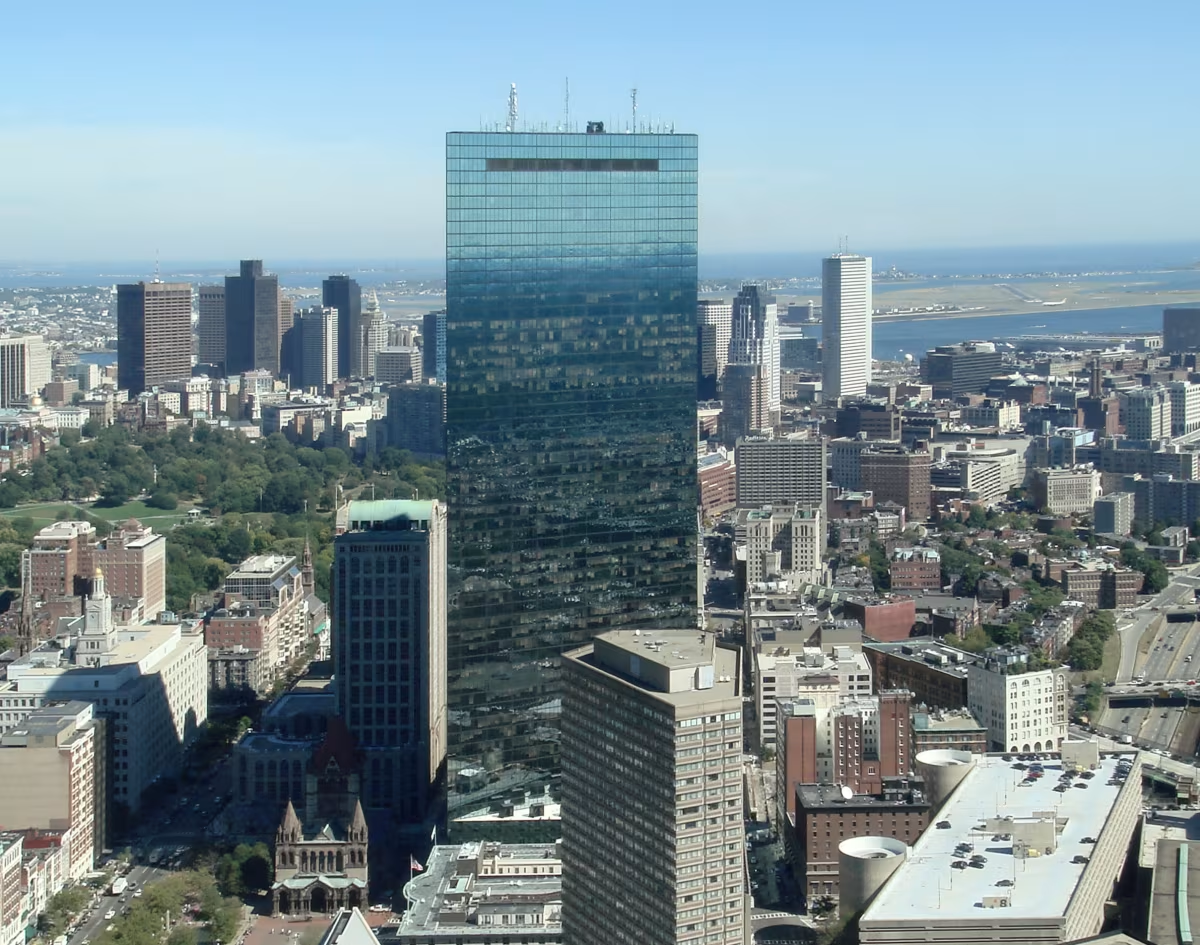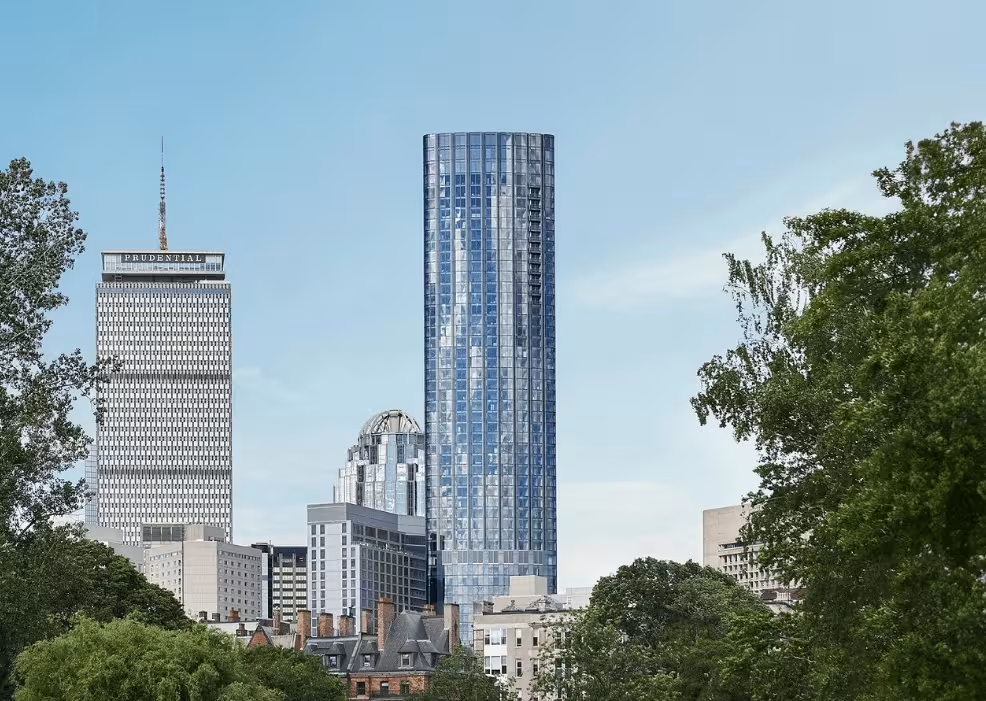John Hancock Tower vs One Dalton Building


Comparing the John Hancock Tower and the One Dalton Building is particularly interesting because they share the same skyline in Boston, MA, and were both designed by Pei Cobb Freed & Partners. However, they were completed more than 43 years apart.
This offers a unique perspective on how the architect's style and the city's architecture evolved over time.
Height & Size
These two towers present an interesting contrast in their proportions. The John Hancock Tower rises higher at 791ft (241m), while the One Dalton Building reaches 748ft (228m). However, the One Dalton Building accommodates more floors with 61 levels above ground, compared to 60 floors in the John Hancock Tower.
This suggests different approaches to interior space design. The John Hancock Tower has an average floor-to-floor height of approximately 4m, while the One Dalton Building has more compact floors averaging around 3.7m each.
These different proportions likely reflect the specific needs each building was designed to serve, whether driven by zoning regulations, client requirements, or the intended use of the spaces within. The contrast shows how architects can achieve different spatial experiences even when working with similar overall building scales.
Architectural Style
The John Hancock Tower was designed in the International Style style, while the One Dalton Building reflects the principles of Contemporary.
The John Hancock Tower represents a late expression of the International Style, a style already in decline in 1976 when it was completed. By contrast, the One Dalton Building followed the then mainstream Contemporary, embodying the dominant architectural direction of its time.
With 43 years between them, the comparison also reflects how quickly architectural priorities can shift from one dominant language to another.
Uses
The One Dalton Building follows a mixed-use model, combining residential and hotel. In contrast, the John Hancock Tower has remained primarily commercial.
The One Dalton Building incorporates a 5-star hotel with 215 rooms. More information is available at the official website.
The One Dalton Building offers 160 residential units.
Structure & Facade
Both the John Hancock Tower and the One Dalton Building rely on a Frame structural system.
A frame structure uses a grid of columns and beams to carry the building's loads. This frees the walls from structural duties, allowing for flexible floor plans and larger windows.
They also employ the same type of facade, a Curtain Wall facade.
A curtain wall is a non-load-bearing facade hung from the structural frame. It is anchored to floor slabs and transfers only its own weight and wind loads, allowing for sleek, glassy exteriors.
| John Hancock Tower | One Dalton Building | |
|---|---|---|
| Pei Cobb Freed & Partners | Architect | Pei Cobb Freed & Partners |
| 1967 | Design Ended | 2013 |
| 1968 | Construction Started | 2015 |
| 1976 | Year Completed | 2019 |
| International Style | Architectural Style | Contemporary |
| Commercial | Current Use | Mixed |
| 60 | Floors Above Ground | 61 |
| 241 m | Height (m) | 228 m |
| 261000 | Built-up Area (m²) | 65590 |
| 21 | Number of Elevators | 6 |
| Frame | Structure Type | Frame |
| Steel | Vertical Structure Material | Reinforced Concrete |
| Reinforced Concrete | Horizontal Structure Material | Reinforced Concrete |
| Glass | Main Facade Material | Glass |
| John Hancock Mutual Life Insurance Company | Developer | Carpenter & Company |
| Cosentini Associates | MEP Engineer | WSP USA |
| James Rudrman | Structural Engineer | WSP USA |
| MA | State | MA |
| Boston | City | Boston |
| 200 Clarendon Street | Address | 1 Dalton Street |